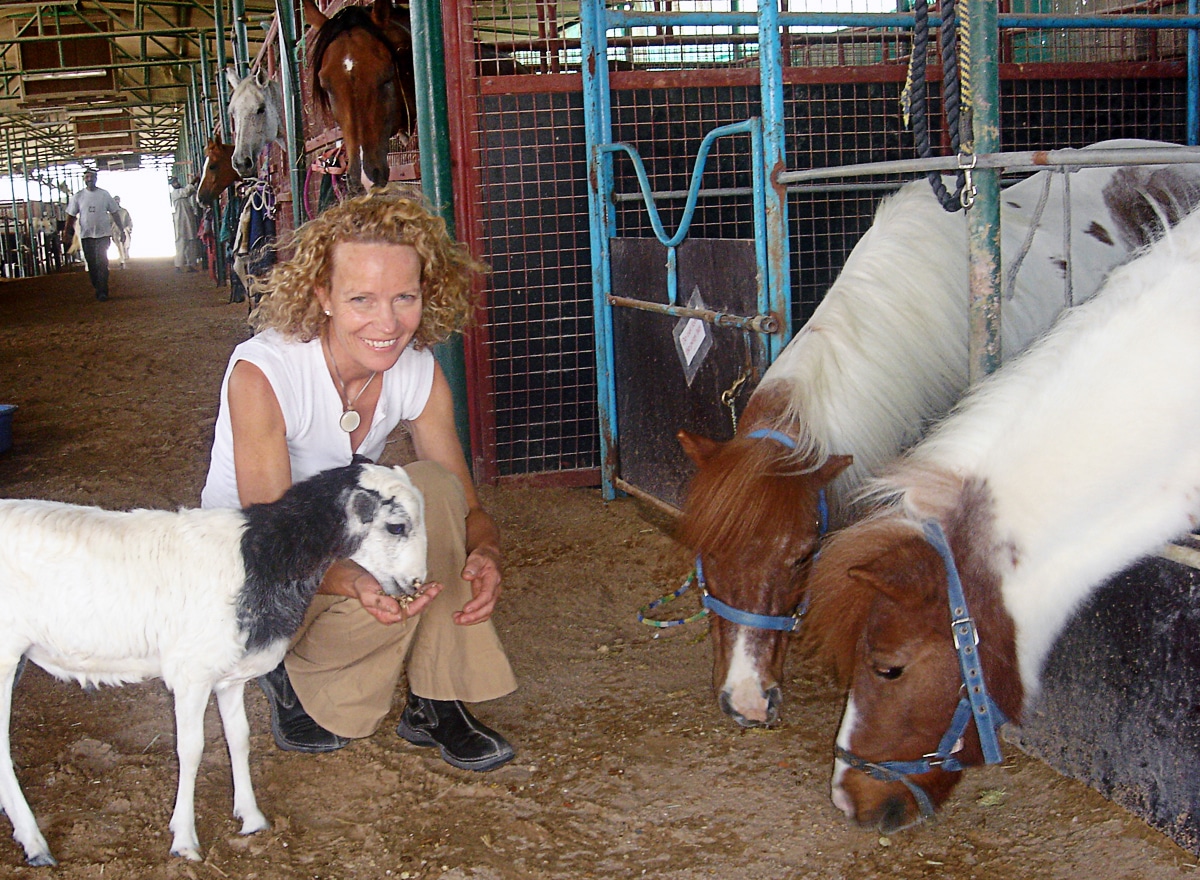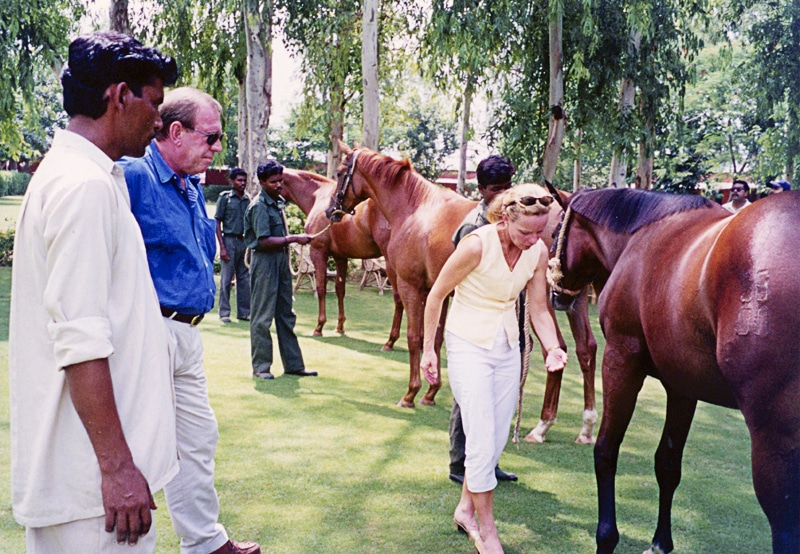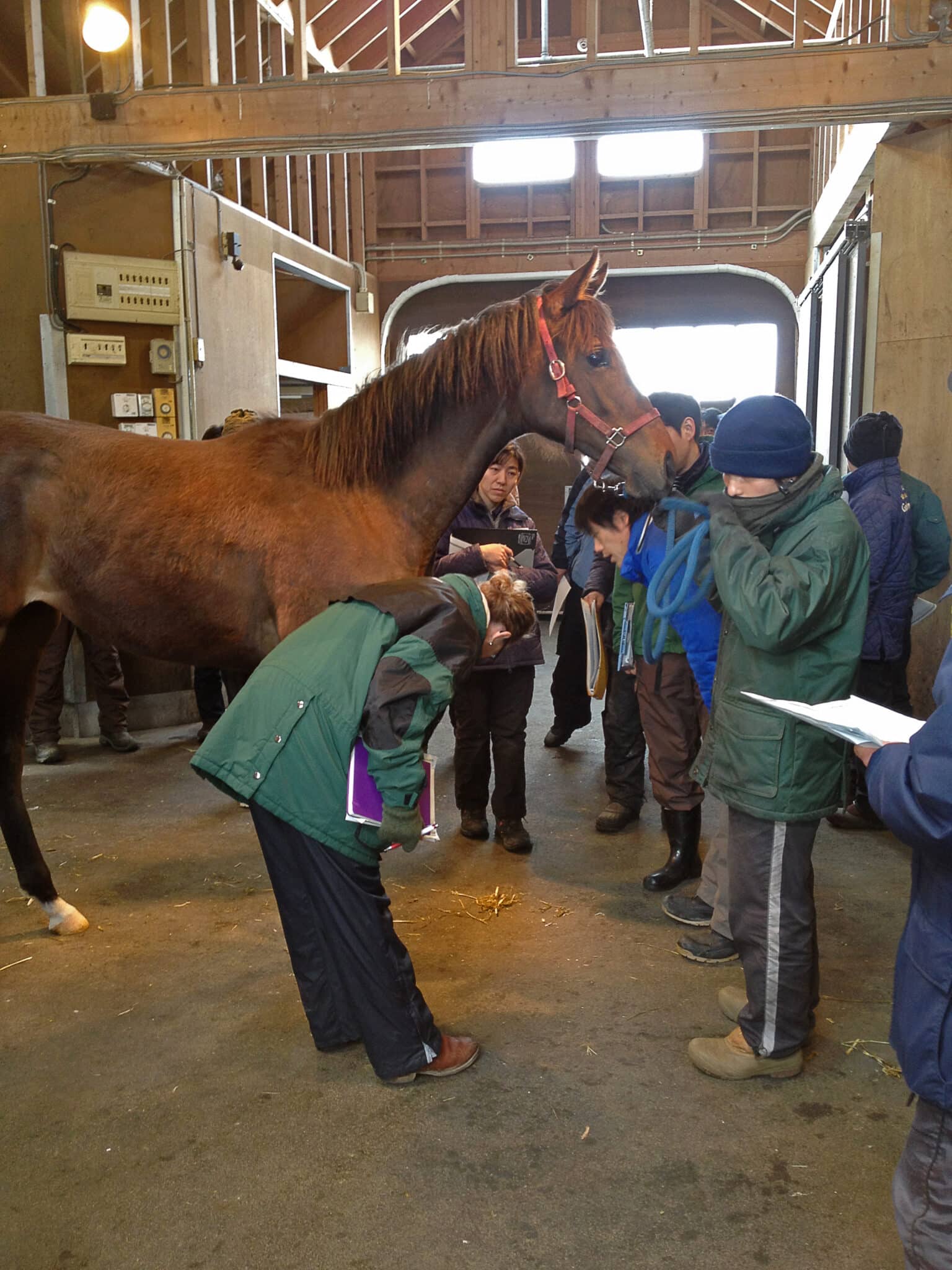
A life less ordinary
Dr Jennifer Stewart studied hard to become a veterinarian, and her career has taken her down a few unexpected roads, as AMANDA MAC discovers.
Dr Jennifer Stewart has earned a number of impressive qualifications: a Bachelor of Veterinary Science, a Bachelor of Science, and, to put the finishing touches to a successful time in academia, a PhD.
Since then, she has been a practicing equine veterinarian and nutritionist, working with horses, their owners, trainers, breeders and other vets in locations across the globe, including the UAE, Bahrain, Oman, South Africa, Botswana, Japan, India, New Zealand, Ireland, China, the Philippines and Korea.
For ten years she was a Senior Veterinary Officer with the Australian Department of Agriculture, Water and the Environment, and was a Biosecurity Veterinarian with the ACT Government for a further two years. With such a varied and unusual background, Jen has some interesting tales to tell, beginning in New Zealand when her grandfather, a farrier, sat her on one of his ponies, which was the beginning of her life-long passion and fascination with horses.
Following a move to Australia with her family, first to Adelaide and then to Wollongong, Jen got her first horse. “Our neighbours in Wollongong were selling a horse and I saved up to buy it. I was just smitten,” she recalls. Next stop on the family’s Australian travels was Canberra, where Jen, by then in her early teens, was gifted an older mare who was in foal. “When she foaled, that was it! That was the start of my love of foals and my interest in them,” she recalls.

After graduating with her veterinary degree, she worked in mixed practice for a year before returning to Sydney Uni to begin her PhD. “Initially my thesis was going to focus on problems in performance horses. But at the time there were more grants available for foal research, so my supervisor suggested we look at newborn foals instead.” No hardship for Jen, who opted to research cardiopulmonary function in newborn foals, which she says, involved “a lot of pregnant mares and late nights.”
Completing her PhD in 1982, Jen married, had children, and for ten years operated a very successful practice on the NSW’s Central Coast, looking after horses for many well-known equestrians, including the Roycrofts and Heath Harris, and servicing an area that stretched from the Central Coast to Newcastle and Cessnock. “Eventually I sold the practice because being on call and working all the time wasn’t really helpful for the children,” she tells me.
A new opportunity came knocking when Sam Rutherford, one of Jen’s old clients, called. “Sam was involved in the Mitavite feed company, which was based on the Central Coast, and he asked me to come and work as their nutritionist,” she explains. With her veterinary career temporarily on hold, she had been studying for a diploma in scientific publishing and editing. So, working three days a week with Mitavite proved to be the ideal alternative, allowing her to reconnect with her passion while still being there for her four children. The research, study, and the conferences she attended rapidly expanded her knowledge of equine nutrition, and by the end of her eight-year stint with the company, her expertise was well honed.
It was during this time that Jen’s marriage ended. “It was really difficult. Mitavite had quite a big international market and I had to travel to Turkey, the Middle East, Bahrain, Japan, Korea, Africa, New Zealand and all sorts of places, so it was a pretty tough few years,” she recalls.

There were some humorous moments, however. On a work trip to Turkey, Jen decided to go for an early morning run and got completely lost. She found a police station and tried to explain that she was in the country working with horses and needed to get back to her hotel. Thanks to the language barrier, the officers concluded that Jen was a jockey who had fallen from her horse and had concussion. One of Jen’s Turkish colleagues still likes to tease her that the police haven’t stopped searching for the horse that got away!
By the time 2007 rolled around, equine influenza (EI) had arrived in Australia. Jen enlisted with the Department of Agriculture and began swabbing, vaccinating and microchipping horses as part of the eradication program. In an unfortunate accident, she was kicked in the back by an irritated mare, fracturing two of her vertebrae. Bleeding and in shock, she asked a young assistant to drive her to hospital. After a near collision at a roundabout, Jen discovered the young man was still on his learner plates and, fractures notwithstanding, decided it was safer to drive the rest of the way herself!
Desperate times call for desperate measures, and Jen often found herself testing horses and ponies on backcountry properties, surrounded by corrugated iron, discarded fridges, and rusting cars. “There were some creepy places where you could hear Dueling Banjos playing as you arrived,” she jokes.
One thing led to another and Jen took up a job offer from the Department of Agriculture in Canberra, where she joined a task force developing an EI risk assessment protocol to establish from which countries Australia would still accept horses, and the quarantine measures necessary for any horse arriving here. “Then we were sent to inspect pre-export quarantine facilities around the world, where we watched to ensure swabs were being taken correctly, that their laboratories were using best practice, the staff were properly trained, and that the appropriate biosecurity procedures were in place – we were checking on all the possible infection control risk factors,” Jen tells me. “We also did a couple of trips back on planes with horses to see how the quarantine requirements were managed.” The responsibility was considerable.

After a decade with the Department, monitoring biosecurity protocols for horses, pigs, birds and other animals in Australia, England, Ireland and New Zealand, it was time to move on, and Will Andrews, then the ACT’s Chief Veterinary Officer, needed someone to do farm biosecurity. “So Will and I visited all the farms and the primary producers around Canberra checking for worm resistance, or if animals had died, to work out why.”
But Jen’s passion for equine nutrition had never left her. For years she had been involved with the research and nutritional management of conditions such as calcium deficiency, laminitis, developmental orthopaedic diseases, colic, and tying-up, and had developed premium formulas for studs, trainers and feed companies – all of which eventually came together in Jenquine, her very successful equine supplement company which she runs with her partner Derek Major, the founder of Agnes Banks Equine Clinic.
As a result, Jen’s focus has moved away from hands-on veterinary practice. “Most of my work now comes from vets who have a horse with an issue, whether it’s laminitis, myofibrillar myopathy, tying-up, poor performance, foal leg diseases and so on. After they’ve done all their tests and diagnostics, they’ll ask me to look at the horse’s diet – and that’s now the focus for most of my data analysis.”
Jen is particularly concerned by the confusion she sees in the equine nutrition space, and offers one of many such examples: “I was looking at the diet of an eight-month-old Warmblood that had osteochondritis dissecans in their stifles. It turned out the owner had been told to feed the foal the same amount required by a mature horse! Because of their sugar and starch levels some of these feeds are really dangerous for younger horses, particularly in those quantities.”
Although it has led to a wealth of fascinating experiences, in Jen’s estimation her life hasn’t been carefully planned. “Well, I haven’t really had a career path, I’ve just followed my passion,” she explains. “But then I suppose there aren’t many people who have ridden on the beach with the Oman Royal Cavalry at six in the morning.”
True that! Which all goes to show that there’s a lot to be said for living a life a little less ordinary.



